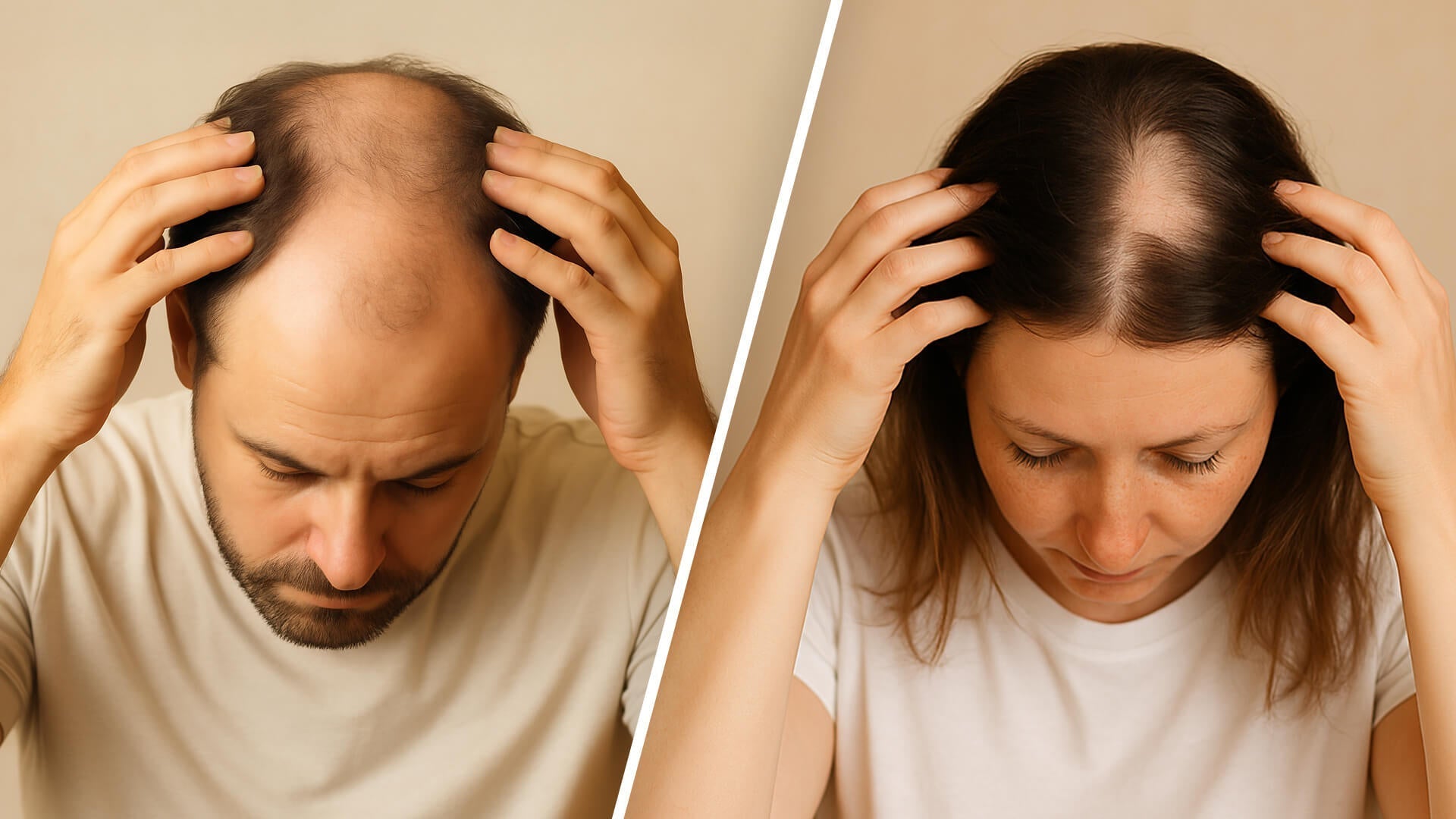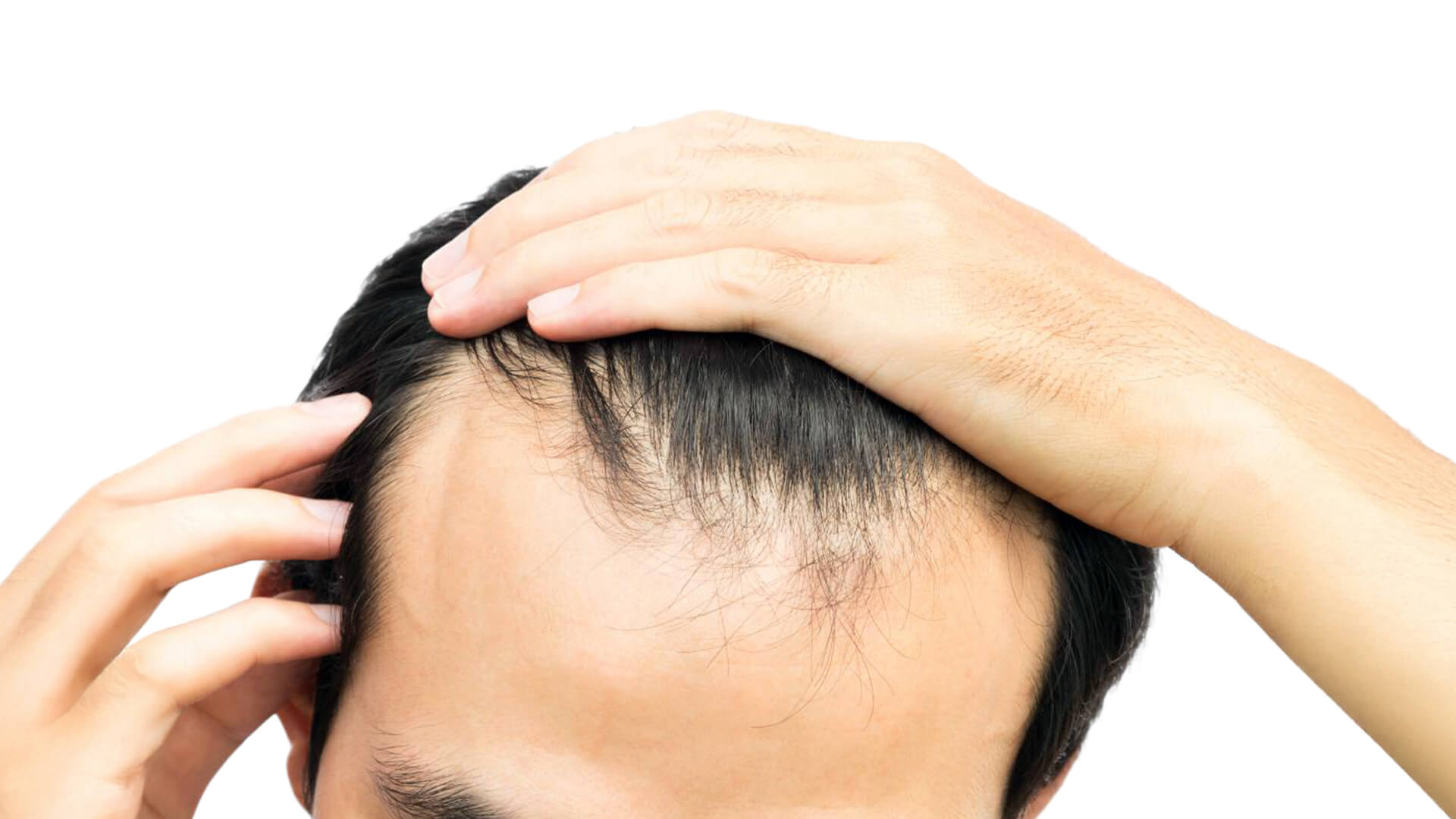Hair loss, or alopecia, is a concern shared by millions of people globally. For many, the quest to understand the underlying causes of baldness often leads to questions about genetics. Who carries the genetic predisposition for baldness? Is it passed down from the mother’s side, or could it come from the father? This article explores these questions, delving into the science of hereditary hair loss and what modern research reveals about the genetic factors that contribute to it.
Understanding Androgenetic Alopecia: The Most Common Cause of Hair Loss
When discussing genetic predisposition to baldness, it is essential to focus on androgenetic alopecia, often referred to as male-pattern baldness in men and female-pattern hair loss in women. This condition is the most prevalent form of hair loss, affecting an estimated 50 million men and 30 million women in the United States alone.
Androgenetic alopecia occurs due to the interaction of androgens (hormones like testosterone) with hair follicles that are genetically predisposed to shrink over time. As the hair follicles shrink, they produce thinner and shorter hairs until, eventually, hair stops growing in these areas.
Is Baldness Inherited from Your Mother’s Side?
One common belief is that baldness is passed down from the mother’s side of the family. This is largely based on the X-linked androgen receptor (AR) gene, which plays a pivotal role in hair loss. Men inherit their X chromosome from their mothers, which leads to the idea that baldness is inherited through maternal genes. Studies have indeed shown a correlation between mutations in the AR gene and androgenetic alopecia.
However, this does not tell the whole story. While the AR gene on the X chromosome can influence the likelihood of hair loss, baldness is actually polygenic, meaning that multiple genes from both parents contribute to the condition. Men may inherit genes for baldness from either parent, even if the maternal influence is stronger due to the AR gene being on the X chromosome.
The Role of the Father’s Genes in Hair Loss
In addition to the genes inherited from the mother, research has demonstrated that genetic markers on non-sex chromosomes (autosomes) also play a significant role in hair loss. These autosomal genes can come from both the mother and the father. For instance, a 2017 study published in Nature Communications identified over 250 genetic loci associated with baldness, many of which were on autosomes.
Thus, while the maternal X chromosome may have a more direct effect on the likelihood of male-pattern baldness, genetic factors inherited from the father can also influence hair thinning and loss. This means that baldness can come from either side of your family tree, debunking the myth that it is solely passed through the mother.
Genetic Differences Between Men and Women in Baldness
Men and women experience hair loss differently due to the different ways that genetics and hormones interact in each sex. In men, androgenetic alopecia typically presents as a receding hairline and thinning at the crown, eventually leading to the familiar horseshoe pattern of hair loss. This is influenced heavily by dihydrotestosterone (DHT), a derivative of testosterone that shrinks hair follicles.
Women, on the other hand, generally experience more diffuse thinning across the scalp, rather than a receding hairline or bald spot. Female-pattern hair loss often begins with widening of the part and can become more pronounced after menopause due to changing hormone levels. Like men, women with a genetic predisposition to androgenetic alopecia have hair follicles that are more sensitive to DHT, although to a lesser extent.
Other Contributing Factors to Hair Loss
Although genetics play a critical role in hair loss, they are not the only factor. Environmental and lifestyle elements, such as diet, stress, and medical conditions, can exacerbate or even trigger hair loss in individuals who are genetically predisposed. Hormonal imbalances, such as those related to thyroid disease or polycystic ovary syndrome (PCOS), can also influence hair loss.
Additionally, while male-pattern baldness and female-pattern hair loss are the most common forms of genetic alopecia, there are other forms of hair loss that may be triggered by different factors. For instance, alopecia areata is an autoimmune condition in which the body attacks its own hair follicles. This type of hair loss is not necessarily genetic but can run in families.
Modern Treatments for Genetic Hair Loss
While genetics may seem like an unavoidable fate, modern advances in hair loss treatments offer hope for both men and women experiencing androgenetic alopecia. Low-level laser therapy (LLLT), such as the devices provided by Hairmax, is an FDA-cleared solution designed to treat hair thinning and promote regrowth.
Laser devices, such as the Hairmax LaserBands, LaserComb, and Laser Caps use medical-grade lasers to stimulate hair follicles, increase blood circulation to the scalp, and promote new hair growth. Clinical studies have shown that Hairmax laser devices can increase hair count by up to 129 new hairs per square inch after consistent use.
In addition to laser therapy, topical treatments like minoxidil and oral medications such as finasteride can help slow the progression of hair loss and even stimulate regrowth. For women, hormone therapies may be an option, particularly if hair loss is tied to menopause or other hormonal imbalances. Keep in mind however, that these drug treatments have some unwanted side effects.
Preventing and Managing Hair Loss
If you have a family history of hair loss, there are steps you can take to manage or prevent its progression:
-
Start Treatment Early: The earlier you begin addressing hair loss, the better your chances of slowing its progression. Hairmax laser devices are most effective for individuals in the early to moderate stages of hair thinning.
-
Maintain a Healthy Scalp: Keeping your scalp healthy by using sulfate-free shampoos and products that nourish the scalp can help promote stronger hair growth. The Hairmax Density Hair Care System is designed to support healthy hair from the roots to the tips.
-
Consider Medications: If your hair loss is more advanced, prescription medications like finasteride or minoxidil might be appropriate.
- Stay Consistent with Treatment: Whether you use laser devices, topical solutions, or medications, consistent treatment is key to maintaining results. It’s important to note that once hair follicles have died, they cannot be revived, so starting treatment early and sticking with it is essential.
Conclusion
In summary, baldness is a complex genetic condition influenced by multiple factors from both the mother and the father. While the AR gene on the X chromosome has a significant impact on male-pattern baldness, other genes inherited from both parents contribute to hair thinning and loss in both men and women.
Fortunately, genetic predisposition to baldness does not have to mean an inevitable decline in hair health. With the right tools, including low-level laser therapy from Hairmax, individuals experiencing hair loss can take proactive steps to preserve and even regrow their hair. Whether through laser devices, topical treatments, or lifestyle changes, there are options available to combat the effects of genetic hair loss.











